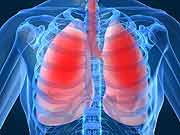Prevalence of 13.2 percent in sample of 91 M. pneumoniae-positive specimens from six locations
MONDAY, July 20, 2015 (HealthDay News) — Macrolide-resistant Mycoplasma pneumoniae (MRMP) has a prevalence of 13.2 percent in a sample of M. pneumoniae-positive specimens from six locations in the United States, according to a study published in the August issue of the U.S. Centers for Disease Control and Prevention’s Emerging Infectious Diseases.
Xiaotian Zheng, M.D., Ph.D., from the Northwestern University Feinberg School of Medicine in Chicago, and colleagues examined the prevalence of MRMP in the United States. Ninety-one respiratory specimens that tested positive for M. pneumonia by molecular methods were collected from six centers throughout the United States.
The researchers found that in 62 specimens, M. pneumoniae grew in subculture (68.1 percent). Macrolide resistance was confirmed in six specimens previously identified by real-time polymerase chain reaction and in two additional specimens. MRMP was detected in 13.2 percent of samples. Phenotypic antimicrobial susceptibility testing was conducted in all 62 M. pneumoniae isolates; all 54 macrolide-susceptible isolates showed very low erythromycin minimum inhibitory concentration (MICs), while uniformly high erythromycin MICs were seen in the eight isolates with the A2063G mutation, known to confer macrolide resistance. All isolates were susceptible to tetracycline and levofloxacin.
“Our finding of high-level macrolide resistance in 13.2 percent of specimens from all six centers throughout a broad geographic area in the United States proves this problem has emerged in all regions of the nation and might increase over time, as it has in other countries,” the authors write. “Clinicians should be vigilant for macrolide treatment failures and consider using alternative drugs if necessary.”
Full Text
Copyright © 2015 HealthDay. All rights reserved.








